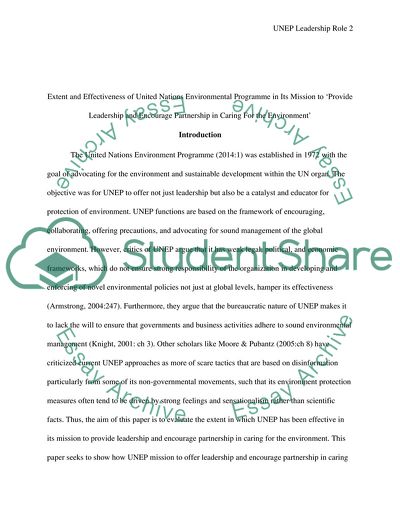Cite this document
(The United Nations Environmental Programme Coursework, n.d.)
The United Nations Environmental Programme Coursework. Retrieved from https://studentshare.org/environmental-studies/1822430-to-what-extent-has-the-united-nations-environmental-programme-been-effective-in-its-mission-to-provide-leadership-and-encourage-partnership-in-caring-for-the-environment
The United Nations Environmental Programme Coursework. Retrieved from https://studentshare.org/environmental-studies/1822430-to-what-extent-has-the-united-nations-environmental-programme-been-effective-in-its-mission-to-provide-leadership-and-encourage-partnership-in-caring-for-the-environment
(The United Nations Environmental Programme Coursework)
The United Nations Environmental Programme Coursework. https://studentshare.org/environmental-studies/1822430-to-what-extent-has-the-united-nations-environmental-programme-been-effective-in-its-mission-to-provide-leadership-and-encourage-partnership-in-caring-for-the-environment.
The United Nations Environmental Programme Coursework. https://studentshare.org/environmental-studies/1822430-to-what-extent-has-the-united-nations-environmental-programme-been-effective-in-its-mission-to-provide-leadership-and-encourage-partnership-in-caring-for-the-environment.
“The United Nations Environmental Programme Coursework”. https://studentshare.org/environmental-studies/1822430-to-what-extent-has-the-united-nations-environmental-programme-been-effective-in-its-mission-to-provide-leadership-and-encourage-partnership-in-caring-for-the-environment.


